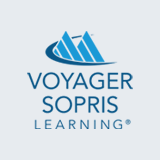Dyslexia: Overcoming the Challenges of Teaching Reading
Several weeks ago, I embarked on my 20th year of teaching at the Naval Academy Primary School in Annapolis, MD. I spent many years as a classroom teacher, our school’s on-site dyslexia tutor, and now as the phonemic awareness teacher for our preschool and kindergarten classes.
In 2015, I completed an intense graduate-level training course about dyslexia screening and subsequently became a certified dyslexia tutor. I’ve also completed numerous training workshops throughout my career.
However, with every new level of education and training I received, there were gaps. Yes, I was able to put a valuable new skill or technique in my teacher tool kit each time, but I couldn’t stop thinking about how little I had previously known about the science of teaching reading. From phonemic awareness and Structured Literacy to dyslexia assessment and intervention, there were obvious missing links.
One in Five
Chances are you’ve had dyslexic learners in your school or classroom and not known it. According to the Yale Center for Dyslexia & Creativity, “Dyslexia affects 20 percent of the population and represents 80-90 percent of all those with learning disabilities. It is the most common of all neuro-cognitive disorders.”
In many of my conversations with teachers about dyslexia in the classroom, that statistic is always quite shocking. Often, teachers ask me, “What should I do?” Teaching reading in any classroom requires a complex set of skills and knowledge. A guided reading program is often used and a teacher must have a highly organized system of meeting with small groups, providing direct instruction when possible, and assessing and engaging in error correction.
Let’s then realize that teachers at the same time must also be working on comprehension skills while keeping students engaged and excited about reading and one can easily agree that while teachers do one of the hardest jobs on Earth, they are often lacking adequate training in how to effectively teach reading.
I think the words of LETRS® author, licensed psychologist, and literacy expert Dr. Louisa Moats say it best, “Teaching reading IS rocket science.”
What dyslexia is and what it is not
Knowing the basics of dyslexia and becoming familiar with the warning signs is a powerful way to develop your teaching style and broaden strategies when teaching reading.
Simply put, dyslexia is a decoding problem—it is language-based and neurological in origin. People with dyslexia typically struggle with fluency, which in turn can cause problems with other skills such as reading comprehension, spelling, writing, and math. It is NOT a vision problem (reversing letters or writing backward) and, most importantly, it is not a problem with intelligence. Here are some warning signs to keep in mind:
Warning signs of dyslexia
(If a child has 3 or more, teacher should investigate further)
(Source: Bright Solutions for Dyslexia)
Preschool
- Delayed speech
- Mixing up the sounds and syllables in long words
- Chronic ear infections
- Directionality—confusion of left/right
- Late establishing a dominant hand
- Difficulty learning to tie shoes
- Trouble memorizing address/phone number/alphabet
- Trouble with rhyming
- A close relative with dyslexia
Elementary school
- Dysgraphia
- Letter or numbers reversals that continue past first grade
- Extreme difficulty learning cursive
- Slow, choppy, inaccurate reading
- Guesses based on shape or context
- Skips or misreads prepositions
- Ignores suffixes
- Terrible spelling
- Can't sound out unknown words
- Often can’t remember sight words
- Difficulty telling time (analog)
- Trouble with math
- Memorizing multiplication tables
- Memorizing a sequence of steps
- Directionality
- When speaking, difficulty finding correct word (“whatchamacallit” and “thingy.”)
- Extremely messy bedroom, backpack, and desk
- Dreads going to school
- Complains of stomach aches or headaches
- May have nightmares about school
High school
All of the above symptoms, plus:
- Limited vocabulary
- Extremely poor written expression
- Large discrepancy between verbal skills and written expression
- Unable to master a foreign language
- Difficulty reading printed music
- Poor grades in many classes
- May drop out of high school
Next week, in Part Two, Dyslexia and Structured Literacy: Why I Fell in Love with Phonemic Awareness, I’ll share with you why using a Structured Literacy approach (decoding words in an explicit and systematic manner) is not only effective for struggling readers, but for all readers. I hope you’ll join me. In the meantime, you can find additional dyslexia support here.


